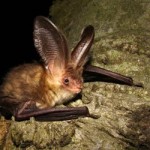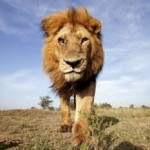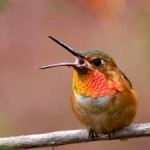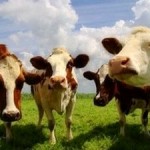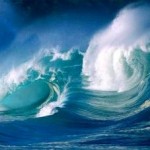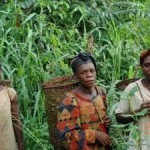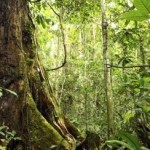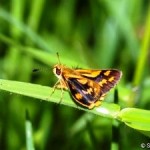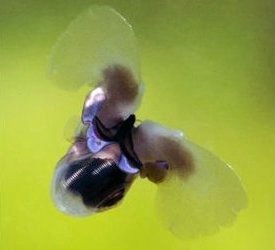
Climate change caused by human activities is by far the worst threat to biodiversity in the Arctic. Some of these changes are already visible, according to a new report prepared by 253 scientists led by Dr. Hans Meltofte of Aarhus University.
Unique and irreplaceable Arctic wildlife and landscapes are crucially at risk due to global warming caused by human activities, according to the Arctic Biodiversity Assessment (ABA), a new report prepared by 253 scientists from 15 countries under the auspices of the Conservation of Arctic Flora and Fauna (CAFF), the biodiversity working group of the Arctic Council.
“An entire bio-climatic zone, the high Arctic, may disappear. Polar bears and the other highly adapted organisms cannot move further north, so they may go extinct. We risk losing several species forever,” says Hans Meltofte of Aarhus University, chief scientist of the report.
From the iconic polar bear and elusive narwhal to the tiny Arctic flowers and lichens that paint the tundra in the summer months, the Arctic is home to a diversity of highly adapted animal, plant, fungal and microbial species. All told, there are more than 21,000 species.
Maintaining biodiversity in the Arctic is important for many reasons. For Arctic indigenous peoples, biodiversity is a vital part of their material and spiritual existence. Arctic fisheries and tourism have global importance and represent immense economic value. Millions of Arctic birds and mammals that migrate and connect the Arctic to virtually all parts of the globe are also at risk from climate change in the Arctic as well as from development and hunting in temperate and tropical areas. Marine and terrestrial ecosystems such as vast areas of lowland tundra, wetlands, mountains, extensive shallow ocean shelves, millennia-old ice shelves and huge seabird cliffs are characteristic to the Arctic. These are now at stake, according to the report.
“Climate change is by far the worst threat to Arctic biodiversity. Temperatures are expected to increase more in the Arctic compared to the global average, resulting in severe disruptions to Arctic biodiversity some of which are already visible,” warns Meltofte.
A planetary increase of 2°C, the worldwide agreed upon acceptable limit of warming, is projected to result in vastly more heating in the Arctic with anticipated temperature increases of 2.8-7.8°C this century. Such dramatic changes will likely result in severe damage to Arctic biodiversity.
Climate change impacts are already visible in several parts of the Arctic. These include northward range expansions of many species, earlier snow melt, earlier sea ice break-up and melting permafrost together with development of new oceanic current patterns.
It is expected that climate change could shrink Arctic ecosystems on land, as northward moving changes are pressed against the boundary of the Arctic Ocean: the so-called Arctic squeeze. As a result, Arctic terrestrial ecosystems may disappear in many places, or only survive in alpine or island refuges.

Disappearing sea ice is affecting marine species, changing dynamics in the marine food web and productivities of the sea. Many unique species found only in the Arctic rely on this ice to hunt, rest, breed and/or escape predators.
Other Key Findings
- Generally speaking, overharvest is no longer a primary threat, although pressures on some populations remain a serious problem.
- A variety of contaminants have bio-accumulated in several Arctic predator species to levels that threaten the health and ability to reproduce of both animals and humans. However, it is not clear if this is affecting entire populations of species.
- Arctic habitats are among the least anthropogenic disturbed on Earth, and huge tracts of almost pristine tundra, mountain, freshwater and marine habitats still exist.
- Regionally, ocean bottom trawling, non-renewable resource development, and other intensive forms of land use pose serious challenges to Arctic biodiversity.
- Pollution from oil spills at sites of oil and gas development and from oil transport is a serious local level threat particularly in coastal and marine ecosystems.
- Uptake of CO2 in sea water is more pronounced in the cold Arctic waters than elsewhere, and the resulting acidification of Arctic seas threatens calcifying organisms and maybe even fisheries.
- Shipping and resource development corridors are rapidly expanding and may dramatically increase the rate of introduction of alien species.
- There is an enormous deficit in our knowledge of species richness in many groups of organisms, and monitoring in the Arctic is lagging far behind that in other regions of the world.
- The multitude of changes in Arctic biodiversity – driven by climate and other anthropogenic stressors – will have profound effects on the living conditions of indigenous peoples in the Arctic.
Check the following link to read/download the Full Report:
http://www.arcticbiodiversity.is/index.php/the-report
Source: Aarhus University.

